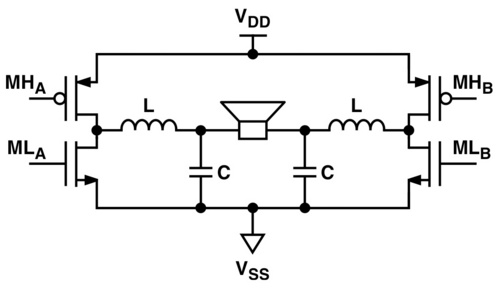I am a new learner of electronic.
- I am trying to modified a H-bridge motor driver circuit to control a thermoelectric cooler. Since I want to use PWM to control mosfets ON/OFF duration, in order to control the input voltage of the thermoelectric cooler. I want the circuit can output a smooth voltage then I use the LC filter, but I don't know how to calculate the value of L & C.
- I try to use 16V,180uF capacitor series with another 16V,100uF capacitor and in parallel with the thermoelectric cooler, it turns out that mosfets are damaged. Can I just capacitor to do the voltage smoothing? If yes, how can I determine what's the value of the capacitor I should use?
the circuit is similar to this:

PS: The maximum voltage of the thermoelectric cooler is 12V (dc) and maximum current will be 12A, the maximum output frequency of micro controller is 1MHz.
